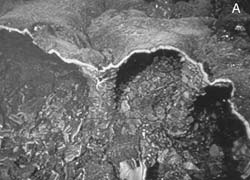Iban Rodríguez Barbarin, a telecommunications engineer from Pamplona, has carried out a study on processing seismic waves emanating from the ocean’s floor. The study is the subject of his graduate thesis, ’Ocean Bottom Seismometers (OBS) processing with refraction seismology’.
The study was carried out within a wider research and development project by investigators at Navarre Public University, jointly with scientists from the Vilanova i la Geltru Centre for Technology, part of the Polytec
Guided by Japanese writings from an era of shoguns, an international team of scientists today reported new evidence that an earthquake of magnitude 9 struck the northwestern United States and southwestern Canada three centuries ago. Their findings are likely to affect the region’s precautions against future earthquakes and tsunamis.
Writing in the Journal of Geophysical Research-Solid Earth, published by the American Geophysical Union, scientists from Japan, Canada and the United State
The highly endangered North Atlantic right whale population is facing a difficult journey to recovery. That recovery may become even more precarious if North Atlantic climate takes a turn for the worse, according to Cornell University ecologists.
Cornell scientists say that winter atmospheric conditions over the North Atlantic affect the abundance of zooplankton eaten by right whales, one of the most endangered species of marine mammal. New models developed by these scientists can be used
A new study by scientists at the University of Virginia (UVa) in Charlottesville and the National Center for Atmospheric Research (NCAR) in Boulder, Colorado, suggests that explosive volcanic eruptions in the tropics may increase the probability of an El Niño event occurring during the winter following the eruption. The research was funded by the National Science Foundation (NSF).
“The El Niño-Southern Oscillation (ENSO) is the dominant mode of interannual climate variability on the planet,

Scientists studying the formation of the sea floor thousands of feet below the surface have a new theory for why there are so many holes and collapsed pits on the ocean bottom. In a recent article in the journal Nature, the researchers say the holes and pits of various sizes are probably formed by lava erupting onto the seafloor so quickly it traps water beneath it, forming bubbles of steam that eventually collapse as the water cools. The hardened crust then breaks, forming pock marks and glassy bla
URI marine biologist says CO2 injection in deep sea would alter ocean chemistry, affect numerous creatures
A Bush Administration proposal to mitigate the effects of global warming by capturing carbon dioxide emissions from power plants and injecting it into the deep sea could have disastrous effects on sea life, according to a University of Rhode Island researcher.
Brad Seibel, assistant professor of marine biology at URI, said that while the Administration’s plan is sti